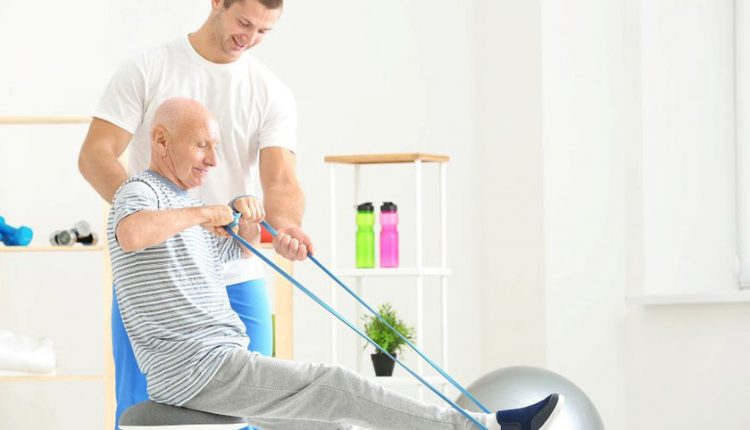
The A – Z Guide of Pilates for Seniors: Balance in Motion
As our lives have progressed in all areas, exercises have also evolved. An example is Pilates, which is a popular exercise for seniors. It has become more and more popular in recent years. Pilates is your best choice to strengthen your abs, maintain or improve your body position, and have many other positive aspects. Pilates was invented in the 1920s and took off all over the globe. This article is a complete guide on Pilates for seniors and provides valuable information about it.
Contents
- 1 Is Pilates Good for the Elderly?
- 2 Which One Is Better for Seniors? Pilates or Yoga?
- 3 Advantages of Pilates for Seniors
- 4 Main Disadvantages of Pilates for Seniors
- 5 What Are the Different Types of Pilates?
- 6 What Are the Most Important Pilates Movement Limitations for Seniors?
- 7 Pilates Exercises for Beginners
- 8 Does Pilates Improve Senior’s Balance?
- 9 Can You Gain Muscle from Pilates?
- 10 What Type of Pilates Is Best for Weight Loss?
- 11 Benefits of Pilates for Mental Health
- 12 How Much Pilates Exercise Is Enough for Seniors?
- 13 What Is the Best Time to Do Pilates?
- 14 What Do We Need for Starting Pilates?
- 15 Is Pilates dangerous for seniors?
- 16 The Perfect Diet During Pilates Exercises for Seniors
- 17 What Should We Wear for Pilates?
Is Pilates Good for the Elderly?
With its variety and modifications, Pilates is a great, low-impact exercise for older adults. Numerous Pilates programs are bone-safe, geared toward mature adults, and backed by the medical community. Pilates meets the individual where they’re at and builds strength, confidence, and mobility. It also produces those feel-good endorphins, leading to a more energetic mood to keep you performing at your best! Pilates can be a perfect workout for older adults or those healing from injury with low-impact exercises and subtle motions. Pilates comes in a variety of ways. The type of equipment used is the most significant difference between them.
But which type of Pilates is better?
Ellie Herman, the owner of numerous Pilates studios, a renowned Pilates teacher, and author, says:
“Pilates is ideal for older adults in each age because it does not affect the body that other types of exercise do, and it is not nearly as intense on the joints as other workouts are.” “It’s a very gentle type of exercise.” Then if you are a senior that stayed away from exercises, Pilates is a low-intensity and low-risk fitness activity for you. Most typical exercises are designed for building muscles, which are not appropriate for older adults. On the other hand, the main goal of Pilates is to strengthen the heart and abdominal muscles. Due to these advantages, Pilates is suitable for 70-year-olds because it can also positively impact posture.”
Which One Is Better for Seniors? Pilates or Yoga?
Yoga and Pilates are both low-impact exercises that rely on the resistance of the body’s weight. The advantages are numerous. Both exercises will help you improve your overall health and quality of life. In short, they both emphasize diaphragmatic breathing, or breathing deeply into the belly, as a way to use the breath correctly during exercise.
Yoga for seniors and Pilates both take mental concentration and help reduce stress. You can also customize them to various levels of fitness. If you want to know which one is better for seniors, Pilates or yoga? You can ask your doctor because it can be more beneficial for you. Many types of yoga necessitate a high level of joint flexibility and mobility, especially in the back, hips, and wrists. While you can change most poses, anyone with extreme disabilities or discomfort can find it challenging to keep up in more advanced classes.
Pilates can be a perfect workout for older adults or those healing from injury with low-impact exercises and subtle motions. Pilates comes in a variety of ways. The type of equipment used is the biggest difference between them. Pilates can be costly, and certain types of Pilates require equipment. Pilates, like yoga, can be adapted, but proper instruction and execution of the exercises are essential to prevent injury.

Advantages of Pilates for Seniors
Pilates is beneficial to people of all ages. Seniors, in particular, will gain great bonuses from Pilates. Balance, determination, endurance, concentration, and your breath are all things that could have improved as you’ve gotten older. Pilates, at its heart, aims to improve both of these aspects. It’s gentle enough for people of all ages, and you can tailor each exercise to your needs on any given day. The following are some of the benefits of Pilates:
1. Pilates Is a Pleasant and Adaptable Workout
Many Pilates exercises can be done while lying, reclining, or sitting without putting any weight on your feet. It’s also practically impact-free, which is particularly advantageous for aging joints. The approach has all of the advantages of other fitness systems without the chances of injury. Pilates can also be used to help people recover from surgeries, including hip replacements and knee replacements. A trained teacher may modify Pilates exercises to meet seniors’ needs, including those with osteoporosis, high blood pressure, diabetes, or other conditions.
2. Weight, Versatility, and Endurance Are All Improved
Pilates training emphasizes balance and flexibility within limited ranges of motion to develop strength and stamina rather than broad, aggressive movements that can lead to early fatigue or injury. Seniors grow to greater ranges of motion as they gain control and trust, which improves flexibility and ease of movement.
3. Increases Body Consciousness and Aids in the Prevention of Falls
Pilates is built on the foundations of posture, equilibrium, breathing, and core power. This focus on increased flexibility and stability is critical for seniors because it can help them enhance functional movements, such as standing and walking balance. Pilates improves core and leg strength and flexibility, which has a beneficial impact on balance.
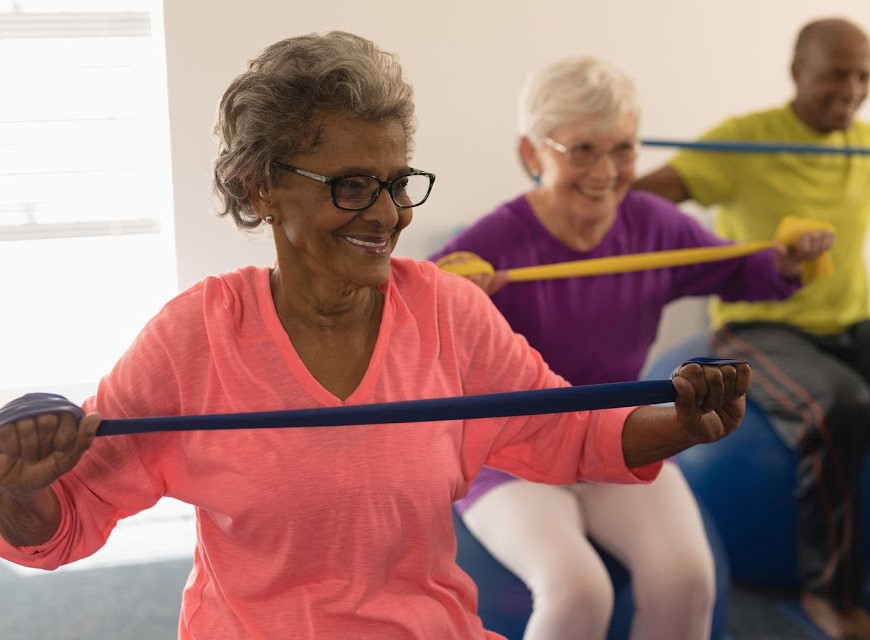
4. Improve and Maintain Movement
As with other age groups, seniors need physical activities because, without enough movement, it can raise a risk of health issues such as obesity, heart attacks, cancer, diabetes, muscle and bone loss, amentia, and depression. On the other side, Pilates is the best way to weight loss for the elderly and exercise that helps retain independence and keep their health and humour.
5. Reduces the Negative Consequences of Chronic Medical Conditions
Exercise programs have been shown to reduce the progression of age-related disorders such as osteoporosis and sarcopenia (muscle loss). According to research, they may also help delay the onset of Alzheimer’s disease and other types of dementia.
An 8-week Pilates program successfully enhanced gait (walking) in post-stroke patients, according to a clinical study published in 2016. Another research found that Pilates exercise can help people with Parkinson’s disease. Regular exercise helps seniors retain their independence for longer, regardless of their medical condition or training process, which is critical in slowing disease development and improving quality of life. If you are over 60, medical tests for seniors over 60 are a good topic for you.
Main Disadvantages of Pilates for Seniors
Pilates fans might be perplexed that such a beneficial workout routine can be disadvantageous. However, Pilates is not suitable for everyone. Particularly for seniors with osteoporosis or arthritis. Furthermore, physicians almost suggest other exercises instead of Pilates. Hence for these groups of people, Pilates is the exercise seniors should avoid because seniors with problems in bones have some weakness in their body, and they should avoid breaking bones. Here we introduce some disadvantages of Pilates for seniors:
1. Pilates Does Not Include Cardio, so It Is Not Recommended for Long-Term Weight Loss
What are your fitness objectives, and can Pilates assist you in achieving them? It is essential to consider and know the answer to this specific question. Pilates might not be the best workout regime for you if you want to lose weight gradually and quickly. It is classified as an anaerobic exercise, which is not recommended for weight loss. Pilates is a great way to strengthen and develop muscles, but it isn’t the best aerobic exercise. Hence, Running or swimming are better cardiovascular exercises for long-term weight loss if your body is in a good situation.
2. Don’t Have Expectations Same as Weightlifting or Bodybuilding
Pilates will not produce the same results as bodybuilding. Although it perfectly complements these activities, it doesn’t deliver the same outcomes as dumbbell exercises for the elderly. Pilates is better for muscle toning and forming. A more intense wetsuit is needed to develop extreme muscle mass.
3. Pilates Is a Low-Energy Exercise
Pilates is not for you if you want a high-intensity workout. This is a low-impact, high-intensity workout. If you’re looking for a high-intensity workout that has your heart pumping and your adrenaline flowing, try aerobics, Zumba, or running.
4. Wrong Pilates Movements Are Cause a Bodies Damage
You may be under the impression that the slow movements used in Pilates make injury virtually impossible. Of course, this isn’t the case. Correct posture, slow and steady movements and a high concentration level are all needed for Pilates exercises. You will injure yourself if you hurry through the exercises or enter them with an incorrect posture.
What Are the Different Types of Pilates?
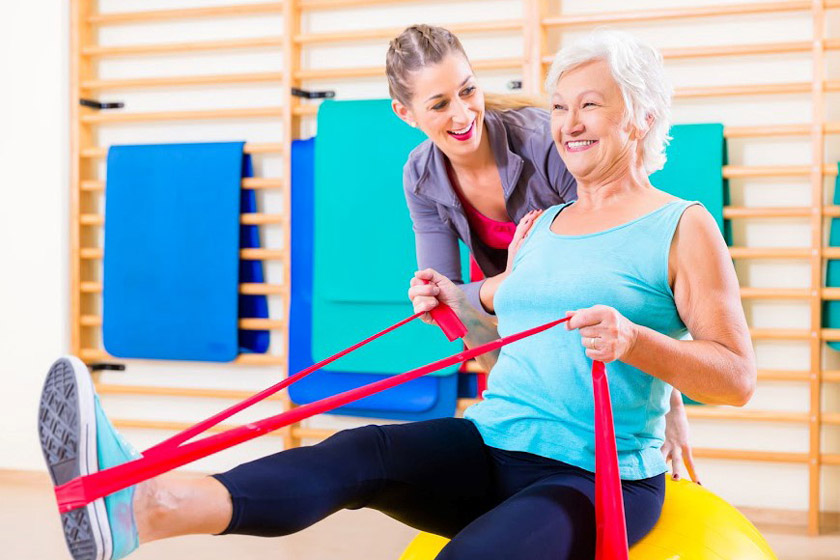
1. Classical Pilates
As opposed to other forms of Pilates, classical Pilates tends to favour flexion. It can be highly beneficial if you have spondylolisthesis or a lordotic lumbar spine. However, it may not be the best choice if you have a disc protrusion. This type of Pilates is often more disciplined than others. Exercises are often performed in a specific order. If you don’t have any physical issues, classical Pilates is the best exercise for seniors.
2. Mat Pilates
Mat Pilates is a form of Pilates that focuses on improving core strength in large groups. As a result, bear in mind that your teacher can only be able to give you a small amount of personal attention.
3. Contemporary Pilates
Traditional Pilates movements are combined with other yoga, strength training, and physiotherapy exercises in contemporary Pilates. You can also use props like resistance bands, foam rollers, and balls. Contemporary Pilates exercises are not always performed in the same order as their conventional counterparts. The use of tools, such as a Pilates Reformer or a Pilates mat, can be more prominent in a typical Pilates workout.
4. Group Reformer Pilates
On a piece of equipment known as the Reformer, Group Reformer Pilate delivers a dynamic, full-body workout. Flow is the focus of this type of Pilates. It’ll lead you through a series of exercises on the Reformer during lectures.
The exercises are designed to improve your physical strength, endurance, and balance. The number of people in a reformer class is usually between 8 and 30. As a result, the teacher can only have a limited time to focus on your particular objectives and concerns.
5. Chair Pilates
Pilates may start with a series of exercises while sitting in a chair. A straight chair with feet easily touching the ground is preferred here, but chair Pilates can also work for seniors or those who find a rigid chair too difficult. Your chair routine may begin with you aligning yourself in the chair (feet fist-width apart, “spread out” your gluts to be on your sits bones, squeeze your butt to feel yourself “pop” up within your spine, and experience using your lower abdominals to support your back). The arm series (Hug a Tree, Back Rowing/Sitting Lats, the entire Standing Arm Series), Spine Twist (modified and avoided with osteoporosis), and leg extensions/adductor squeezes are the following exercises to try.
What Are the Most Important Pilates Movement Limitations for Seniors?
One of the best aspects of Pilates is that it adapts to the body’s current state. If you have a restricted range of motion, you can adjust the Pilates routine to suit your limitations. Not attempt to force something. Use your breath to help you move more slowly and purposefully. Even for a young athlete, the best work is always performed within a limited range of motions. Your priority should always be to avoid causing damage. Work “smaller,” which means using a smaller range of motion than you would assume you’re “supposed” to. Request assistance and set up a few private sessions with a certified Pilates instructor.
If something hurts you, stop doing it right away. Place yourself in a neutral spine position with knees bent and feet on the floor if you can do Pilates on the floor rather than in a chair. Allow your body to relax with the aid of gravity. If you’re in pain after a workout, take a break, consult your doctor, and don’t be stubborn about doing your exercise. Remember that during the exercises, your body should not be painful.
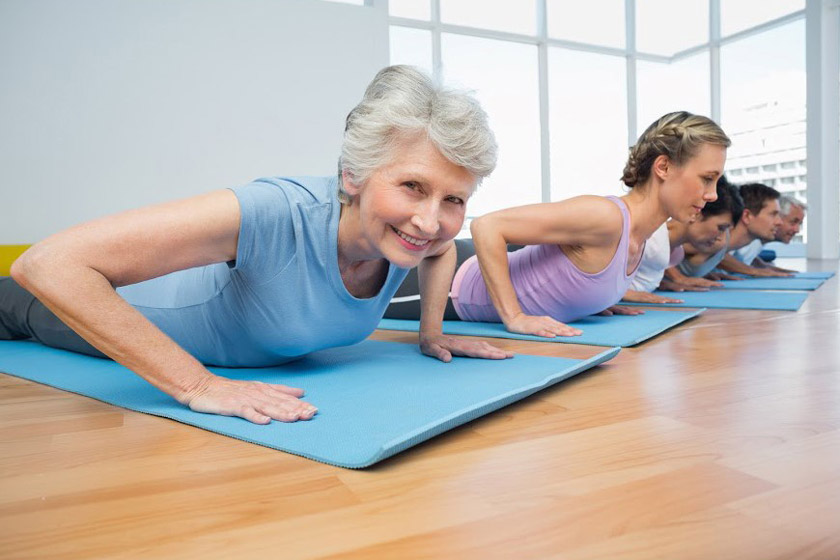
Pilates Exercises for Beginners
Pilates may start with a series of exercises while sitting in a chair. A straight chair with feet easily touching the ground is preferred here, but chair Pilates can be changed for seniors or those who find a rigid chair too difficult. Common Pilates movements for beginners included chair Pilates, arm series, spine twist, and leg extensions. Also, if you are curious about Which Exercises Can Wake Up Your Body and Brain? You can read the last articles. Here we take a brief look at these movements:
1. Pilates Starting Position: Constructive Rest
There’s a lot more than meets the eye when it comes to positive rest. This simple exercise aims to locate your neutral spine. By pushing your lower back into the floor and relaxing your spine into a small natural arch or C-shape curve, you will do this.
2. Pilates Head Nod
The Pilates head nod lengthens and stretches the back, one of the Pilates method’s main goals. It would be best to have many Pilates exercises that express the spine, such as forward bends and rolling exercises.
3. Pilates Arms Over
The main aim of Pilates arms over is to keep the body aligned as the arms move overhead. This transition also helps to improve shoulder range of motion.
4. Pilates Angel Arms
Angel arms, like arms over, engage various upper-body muscles when teaching us how to use the arms and shoulders without losing the balance of the spine and ribcage.
5. Pilates Pelvic Clock
The Pilates pelvic clock is a subtle but effective step that increases knowledge of the pelvic position and strengthens the muscles required for pelvic stability.
6. Knee Folds
Knee folds have the primary goal of allowing you to move your leg in its hip socket without compromising pelvic stability. This exercise is essential for all physical movements that we perform daily, such as sitting, walking, and lifting.
Does Pilates Improve Senior’s Balance?
Pilates improves core and leg strength and flexibility, which has a beneficial impact on balance. This impact, combined with the advantages of basic exercise, will help seniors reduce the risk of falling; Pilates is also a safe way for older people to recover from surgical operations like hip or knee replacements. Control and best balance exercise for seniors are essential for older adults because they can help them enhance certain aspects of their functional movement, such as posture and pose.
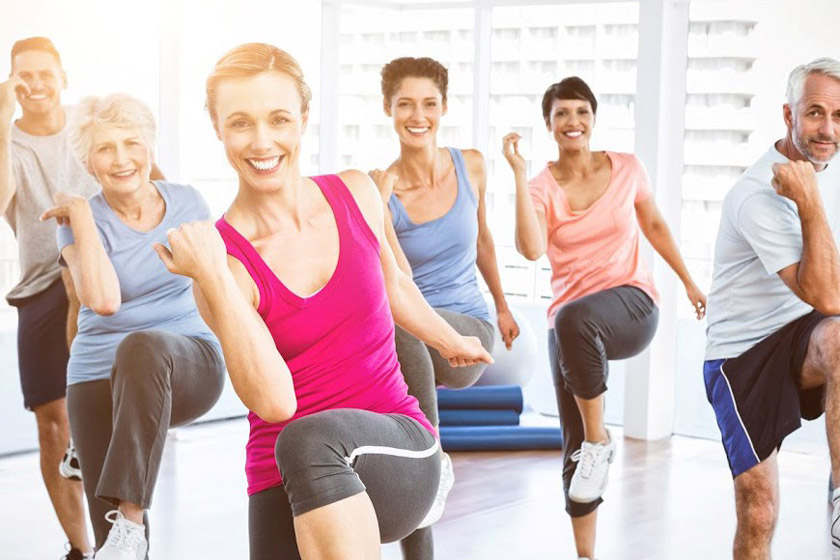
Can You Gain Muscle from Pilates?
How can seniors build muscle? Pilates will help you develop muscle bulk by increasing muscle strength and density, as well as toning and shaping your muscles. Don’t forget that Pilates is not designed the same as aerobic exercise or a cardio workout in general. Then you can read how seniors can build muscle and gain helpful advice for building your muscles.
What Type of Pilates Is Best for Weight Loss?
Pilates exercises are perfect for shaping and strengthening the abs, but if your belly is still sticking out after you’ve done your Pilates properly, you might be tempted to give up and head for the couch. Take heart before you go. Furthermore, strengthening your heart with Pilates has several advantages in building killer abs: It will help you avoid bad posture, protect your back from injury, and boost your workout results.
If you want to lose weight, you can use a BMI calculator to know your BMI. A BMI of more than 25 shows that the person is overweight, while over 30 indicates obesity. If you have no access to any of these calculators, you can do this here:
Benefits of Pilates for Mental Health
Pilates is also commonly used as a stress-reduction and coping technique. Related to the wellness coach Elizabeth Scott talks:
“Exercise will decrease ‘stress hormones’ like cortisol and increase endorphins, your body’s ‘feel-good’ chemicals, giving your mood a natural boost.”
How Much Pilates Exercise Is Enough for Seniors?
What is the best workout time for seniors? The answer is shorter workouts are most successful when combined with a larger fitness schedule that includes cardio and longer Pilates workouts, so 10 or 20 minutes a few days a week will make a difference in your body.
If you are a beginner, doing the Pilates exercise at least twice a week has good results in your resilience, endurance, and balance. Then if you attract more to Pilates exercises, you can add one more day to your exercise routine. Also, if you do some light Pilates movements daily, it will be fantastic. Only make sure your workouts are varied and balanced to keep you motivated. It’s critical to change up your workout intensity and concentration.
What Is the Best Time to Do Pilates?
Practice only works if you pick the right time, depending on your mood. For example, if you work out in the morning, you should first warm up your body. Or, if you choose to exercise at night, you need to be aware that movements can increase your heart rate and temperature, negatively affecting your sleep. Then you should set enough time between your exercise and bedtime.
What Do We Need for Starting Pilates?
Traditional Pilates equipment, such as magic circles or hand weights, and non-Pilates equipment, such as stretch bands, gym balls, and foam rollers, can be used in mat training. The Reformer, Cadillac, Wunda Chair, Spine Corrector, and Ladder Barrel are the Joseph Pilates-designed apparatus used in Pilates with apparatus. However, if you don’t want to go to the gym, you can do Pilates exercises at home. All you need is a chair and simple equipment. But you should notice that seniors should begin slowly and choose the most comfortable movements for them. They may want to start with the gentlest versions before getting used to the routine.
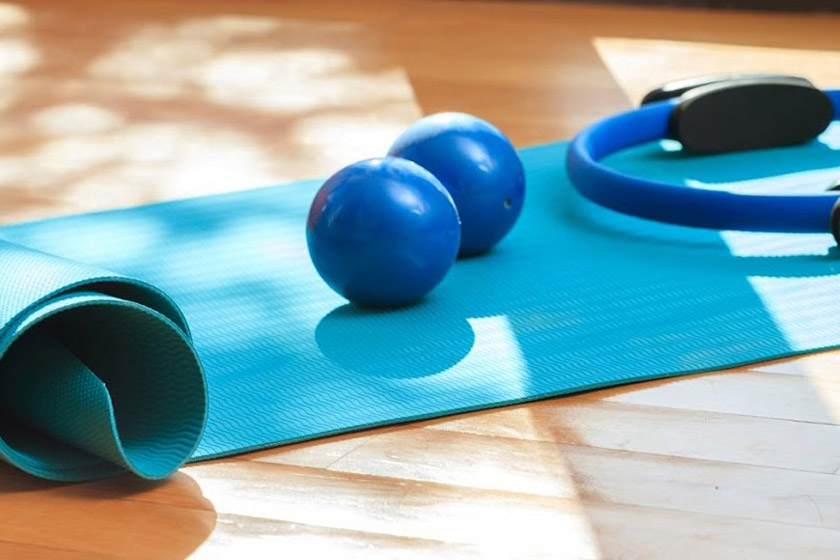
Is Pilates dangerous for seniors?
Ensure that the prospective instructor is knowledgeable about Pilates exercises and aware of any specific back problems. When a patient begins Pilates after undergoing physical therapy, the physical therapist should explain the exercise concepts that are especially necessary for recovery.
The Pilates system’s exercises should be demanding (both mentally and physically) but not too challenging for someone to struggle with. Always remember that if an exercise causes you discomfort, you should pause and inform the teacher. It’s possible that the exercise is too complicated or that the individual may need additional assistance to complete it correctly.
The Perfect Diet During Pilates Exercises for Seniors
We need a guide on what to eat before a workout for seniors before exercising. Although Pilates is a low- to moderate-intensity workout that doesn’t necessitate the use of special sports drinks, you should stay hydrated. A glass of water is often a good option. Thirty minutes before your lesson, drink a full 8-ounce glass of water. That way, your body will have enough time to remove the excess, and you’ll be well-hydrated from the start.
You’ll want to make sure your body has enough nutrients to strengthen your muscles and refuel your batteries. After class, try a protein-packed green smoothie or a healthy snack with lean protein like fish or chicken and carbohydrates like whole grains. Don’t forget Pilates is all about thinning and pulling your abs, so eat a light snack 30-45 minutes before class and a heavy meal one hour before training.
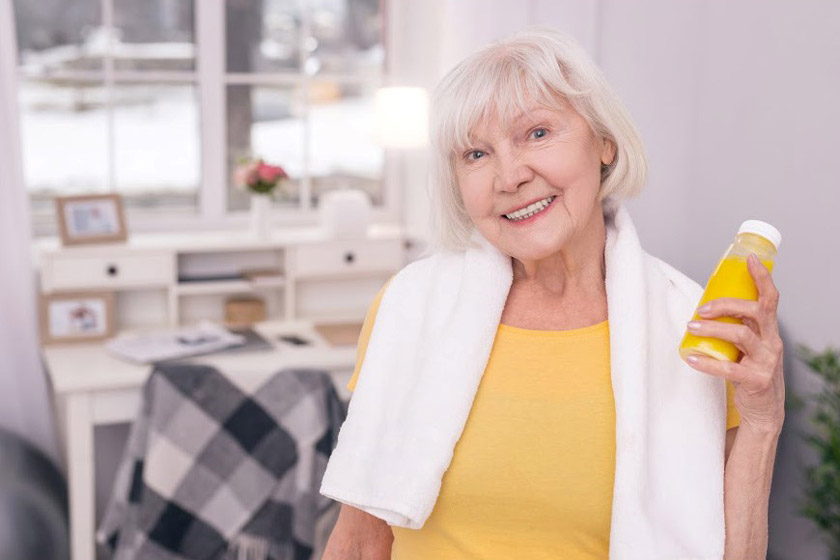
What Should We Wear for Pilates?
The majority of Pilates studios are laid-back, but there are exceptions. Keep it easy (at least at first) as you find out what suits you best. For example, don’t wear tie-back tops because your body is uncomfortable in tight clothes and can’t move easily. If you want to train in shoes, you can choose simple sports. Also, keep modesty in mind. Some Pilates exercises require you to lift your legs into the air or invert your torso. Clothing that is too loose can ride up or fall, exposing the body. In the guide to choose the right Sports clothes for seniors, you can read helpful tips.
Final Words
Pilates is a fun and low-intensity exercise, and you can do it with your friends and partners in the gym or alone at home. Don’t forget that before beginning any workout program like Pilates, always check with your doctor and a licensed instructor. Before enrolling in a class or following a fitness tutorial, you should consider taking private lessons. Injuries will occur if you use an incorrect type or force yourself beyond your limits.
Does anyone know anything about water pilates or water yoga? I’m looking for a fun and safe way to help my mom with her back pain. She doesn’t like to work out, but she likes aquatic sports. Do they really work?
Yes. For people suffering from back pain, water therapy can be beneficial. It increases joint range of motion, strengthens and stabilizes your lower back, and decreases pain. You can relieve back pain by standing on your right leg with your knee. While holding on to the pool’s wall with your right hand for support, stand on your right leg while your knee is bent. Bring your left leg up to your chest and bend your left knee and then bring it back down.
I’m 70, and I attended a yoga class last year. I can say it is fantastic! Some of my muscle pains relieve after workout classes after a short period of exercise. In addition, it relaxes me and disappears my unnecessary tensions about trivial subjects. I love it
I’m 68, and I just started doing Pilates exercises at home. I wish I could go to gym sessions like you, but l have to take care of my wife, so I can’t leave the house for very long. But I do agree with you. Although I just started it recently, it already feels amazing.
I love both pilates and yoga. But I think pilates is more energetic than yoga, and if you want to reduce your weight, Pilates is more beneficial. Also, be careful because maybe pilates harms your back, so before starting your exercise, be sure about your body situation. Don’t forget the final goal of sports is a healthy body.
I think You’re right; choosing the proper exercise based on one’s physical conditions is essential. I also think for people who haven’t been active for a long time, like myself, it’s best to start with a professional trainer. And I guess that’s why all the workout I do is walking!
Same here. I have tried both, and I’m definitely team Pilates. I did yoga for four years. Then I participated in a Pilates session with my friend who went to the same gym as me, and I loved it so much. Now I do Pilates 3 times a week.